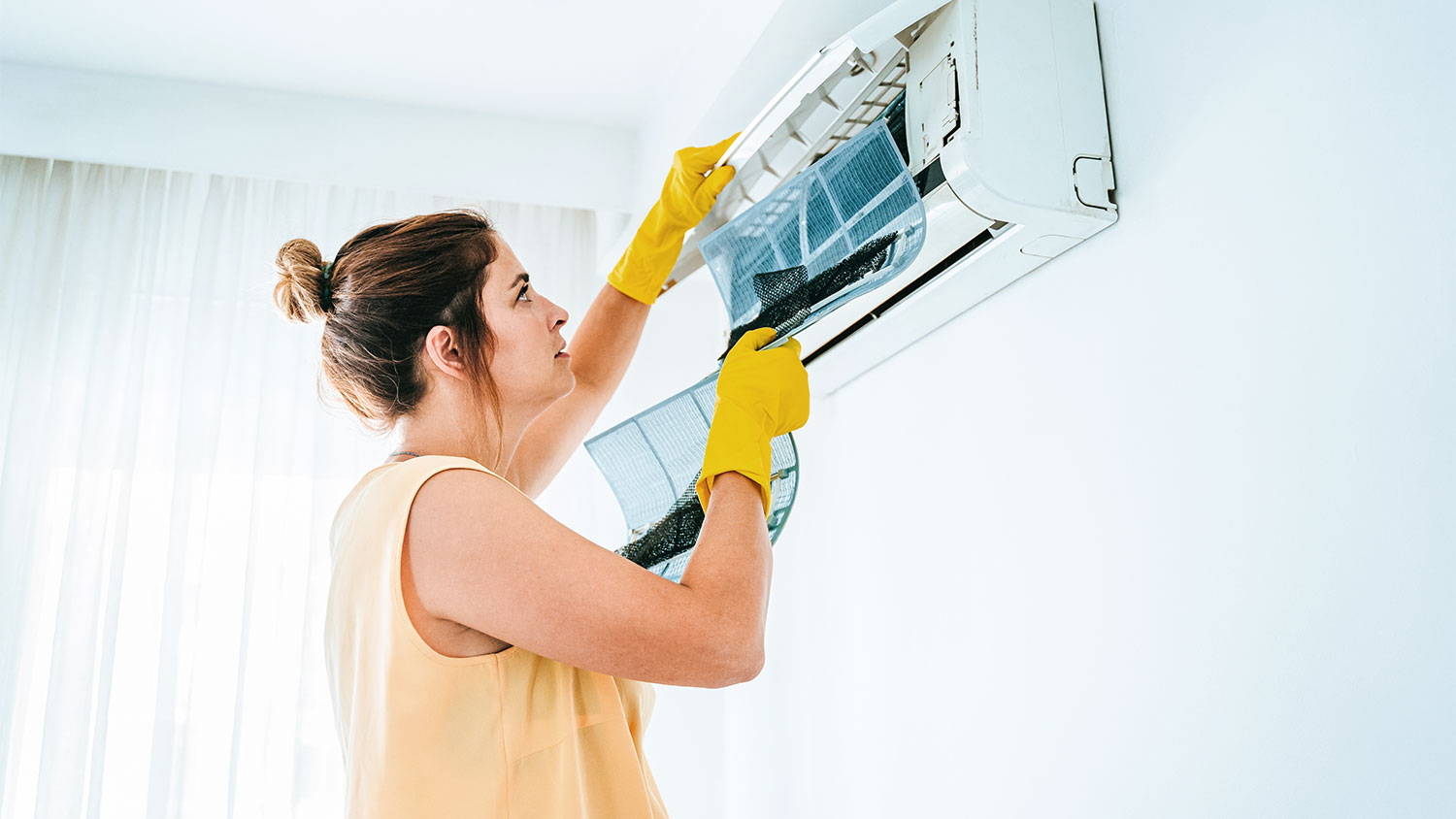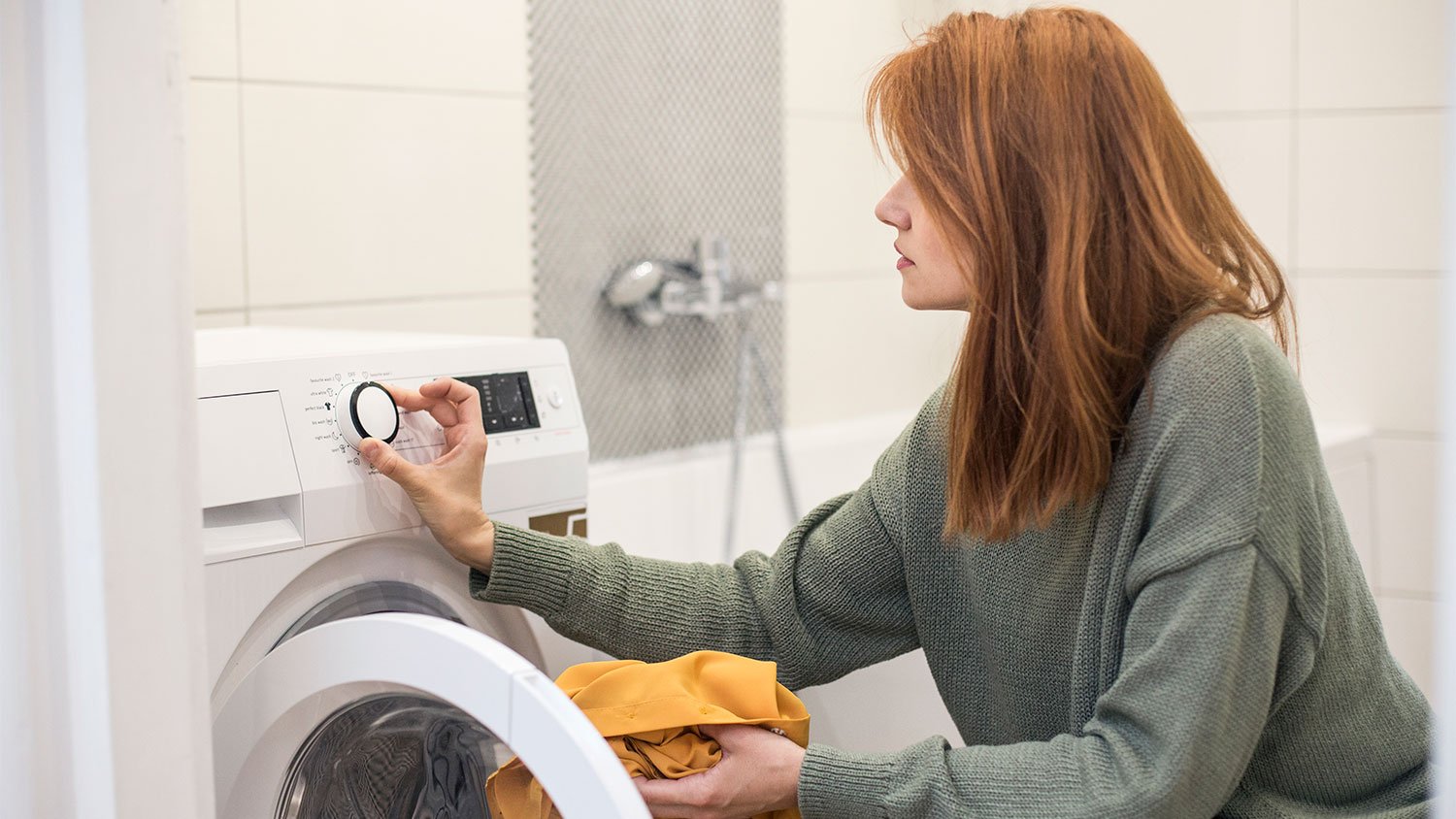
The cost to remove a groundhog can vary depending on where you live and whether you do it yourself or hire a professional. We’ll help you figure out the true cost of groundhog removal, along with strategies for humane trapping and release.
Act fast to wipe out the legendary, lingering stench of skunks for good


If a real-life Pepé Le Pew sneaks onto your property and sprays you, your pet, or your favorite sofa, the overwhelming odor can be enough to send you into a blind panic. Thankfully, if you jump into action, you won’t have to worry about imminently arriving guests beating a hasty retreat. Learn how to get rid of skunk smells with some simple household items and a little elbow grease.
If a skunk gets trapped in your home and mobilizes their musk, don’t delay in taking a multi-faceted approach to purge the smell permanently.
Don’t delay in opening your windows, powering up the air conditioning, and running floor and ceiling fans at high power. Lift blinds and open curtains to let the sun stream in, helping to oxidize the odor.
Don’t despair if your costly couch or another piece of prized furniture is a victim of skunk spray. Quickly move the piece into the yard to air it and start the cleaning process. You can use a commercial skunk smell removal cleaner, but steam cleaning is worthwhile for ingrained odors. If you don’t have a steam cleaner, you can rent a professional-grade model or hire a furniture upholstery cleaner near you to tackle the task.
If the skunk aerosols an area rug, it might be enough to put it in the washing machine, but how do you deal with a doused carpet? It depends on the carpet material and how much of it took a hit.
One DIY method is to use a baking soda, vinegar, and warm water solution for small patches, let it dry, and then repeat as necessary. For stubborn smells or larger areas, you should steam clean your carpet.
Hard surfaces like wood, ceramic, vinyl, concrete, and laminate are less of a challenge to tidy up than carpets and soft furnishings. Mix nine parts water to one part bleach in a spray bottle, and then spray hard flooring and walls, wiping down with a rag or paper towels. Perform a patch test to ensure the color will hold as you clean. If you’re uncomfortable using bleach on some surface types, create a similar mixture using distilled vinegar.
Fill several small bowls with white vinegar and leave them around the offending area for 24 to 48 hours, or until the skunk’s scent fully disperses. Vinegar has many surprising uses, and it tends to absorb and neutralize any foul odors. Keep the bowls out of reach of children and furry friends. Boiling some vinegar in a pot for a few minutes can speed up the results if the smells are stuck in your kitchen.

Old, clogged air filters hold onto dust, dirt, mold, and other smell-inducing elements. If you’ve got a persistent odor lingering in your home, skunk or otherwise, swap those filters for fresh ones ASAP.
Washing affected clothes in a solution of 1 quart 3% hydrogen peroxide, ¼ cup baking soda, and 1 to 2 teaspoons of liquid dish soap and then air drying the clothing is an effective way to remove skunk odor. You can also apply this method to removable cushion covers, pillow covers, and any other textiles that can be removed from furniture. Fabric that cannot be removed can be sprayed with the mixture, rinsed, and vacuumed.
You may be able to use a steamer to remove skunk smell from upholstered furniture, especially if you have a model that works with vinegar. In all cases, make sure to do a small test on your clothing and upholstery before using hydrogen peroxide or vinegar on the fabric to ensure that it won’t stain.
Curiosity, the desire to chase, and not knowing how to read the warning signs mean your pets are more likely to get skunked than you. If the spray hits their eyes, rinse them immediately with clean water.
The cleaning process is similar to removing any dog or cat odor. Wash your pets(ideally outside and as soon as possible) using an approved skunk-removing shampoo. Alternatively, a home remedy for skunk smell removal is to mix 1 quart of hydrogen peroxide, 1 teaspoon of grease-cutting dish detergent, and ¼ cup of baking soda. If you don’t have hydrogen peroxide, try substituting it with vinegar. Rinse well and repeat if the smell is still sticking around.
Some sensible precautions when using hydrogen peroxide include:
Wear gloves
Don’t let the lather sit for longer than five minutes (it can bleach fur)
Avoid getting it in your pet’s eyes
Stop your pet from licking themselves
Don’t store the mixture, as it can explode in a closed container
Thankfully, skunk spray won’t cause any permanent injury, even if it leaves you temporarily disoriented and nauseous. But you’ll want to ditch your duds and get into the shower pronto.
Scrub your hair with a deodorizing shampoo or sit in a bath with a few cups of baking soda in it for around 20 minutes to lift the lousy whiffs. This step will help neutralize the smell and wash it down the drain.

A skunk’s spray can be lethal for clothing. Unless the pest sprayed your all-time favorite T-shirt, it might be best to throw them out. Otherwise, you should wash any stinky clothing immediately. Clean these items with the highest temperature setting and use antibacterial detergent. Be sure to air dry your clothes, as machine-drying can bake in the smell.
You won’t be able to wash delicate items at high temperatures, so try soaking them in a mix of detergent and baking soda for around half an hour before rinsing and air drying.
You’re more likely to smell an elusive nocturnal skunk than see one. Alongside that malodorous musk, some other signs that one of these critters is a tenant in your yard include:
Circular holes in your lawn or rolled back sod from skunks digging for grubs
Bites taken out of lower sections of your garden crops
Paw print tracks that are five-toed and slightly bigger than a cat’s
Tubular droppings
Once you spot these signs, you’ll want to get rid of the skunks before they have a chance to spray.
Leaving food out will attract animals to your home. Invest in a lockable garbage bin for your food waste to keep pests away.
Keeping skunks away from your home means there’s less chance of dealing with another stinky situation down the line. Use the following tips as part of your stink-free strategy:
Secure trash cans
Feed pets indoors
Don’t add kitchen scraps to the open compost pile
Tidy up bird feeder spills every evening
Mow your lawn low to keep tasty insects at bay
Block any den spots in crawl spaces or below decking
Invest in skunk-proof fencing
The smell of a skunk’s spray is so noxious that it leads to desperation. Throughout the years, there have been plenty of myths and theories on removing that awful odor, many completely false. Spoiler alert: none of these work.
Tomato juice: This has long been the go-to myth about removing foul skunk odors. You’ll still smell the skunk—you’ll just be covered in gallons of tomato juice.
Citrus: There’s a kernel of truth to this myth. Citrus is acidic, and acidic chemicals, like vinegar, are often used for tough cleaning tasks. Proponents of this method call for a bath, like the tomato juice option above, or a topical spray. Again, this doesn’t work. It could mask the odor for a little bit, but not for long.
Perfume: The idea here is to cover up the skunk’s odor with something that smells good, like perfume, cologne, or a fabric softener. Skunks have evolved their odorous spray for millions of years, so a store-bought cologne is not going to do the trick.
Beer, oatmeal, and more: We hate to break it to you, but there’s no miracle item that will automatically eliminate skunk smell. This includes beer, oatmeal, or any of the other common household items that are typically discussed.
If a skunk has gone to town on a prized piece of furniture or a delicate carpet, and you can’t shift the stench, you might need to call a professional odor removal service near you. This service will cost between $200 to $1,000, depending on your home's size and the severity of the skunk’s smell. However, getting rid of a skunk yourself could cost as little as $5 to $50, depending on what materials and cleaning tools you already have.
If the skunk is still lurking in your home after you take the above steps, you may have to hire a local animal removal service to bid them a fond farewell.
Animal removal costs from $200 to $400 on average, but it may cost a bit more to apprehend a family of skunks—up to $600 depending on the level and location of the infestation. Many kinds of skunks find their way into your basement or crawlspace, so it’s a good idea to call in a pro to trap and relocate them while you reseal the new-found entrance to your home.
Mark answered my call the same day and was able to fully remove the old shingles and replace them within 2 days. I would definitely recommend him and would not think twice about hiring him again.
Skip the other guys and hire Eastern Mold Remediation! I had originally hired Northeastern Mold Remediation out of Hampden to treat a top and bottom floor for damage caused by a burst water pipe. Do yourself a favor and don't hire Northeastern. I had visited a couple of times while they...
Margarita Paredes was a delight to work with while the painting job was set up, exhibiting extreme patience with our many questions. The 3 painters, including Margartia, showed up on time and completed the job well within the projected schedule; only one rainy morning delayed them. They...
The installation process progressed very well. Randy Sprague carefully reviewed my requirements with me and recommended a gas and an oil system that would satisfy my requirements. I chose the gas system because it was the most efficient, quiet and compact. However, it was also the most...
Gary remotely took over the computer and in coordination with our oher computer was able to remove the virus and reestablish the operating system.
From average costs to expert advice, get all the answers you need to get your job done.

The cost to remove a groundhog can vary depending on where you live and whether you do it yourself or hire a professional. We’ll help you figure out the true cost of groundhog removal, along with strategies for humane trapping and release.

While moles eat termites, ants, and more, they can still be a nuisance. Learn yard mole removal costs, including humane options to decide what’s right for you.

When calculating wildlife removal costs, you’ll need to consider the type, size, and amount of animals. Our guide will show you the wildlife removal cost.

When you need to know who to call for possum removal, these are the best wildlife removal professionals who can do the job humanely and legally.

Removing squirrels humanely from your yard can be tricky if you’ve never done it before. Here’s what you need to know about using bait for a squirrel trap.

Scorpions are a common pest in warm, dry climates. Learn how to effectively deter, prevent, and kill scorpions in and around your home and property.